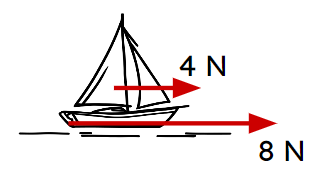Myths about teaching can hold you back
- Year 9
Floating, mass and shape
I can explain how the density of an object determines how well it floats.
- Year 9
Floating, mass and shape
I can explain how the density of an object determines how well it floats.
These resources will be removed by end of Summer Term 2025.
Switch to our new teaching resources now - designed by teachers and leading subject experts, and tested in classrooms.
These resources were created for remote use during the pandemic and are not designed for classroom teaching.
Lesson details
Key learning points
- The whole of an object is floating on water if part of it is above the surface.
- How well an object floats in a liquid does not depend on the depth of the liquid.
- An object floats in water if its shape can push its own mass of water out of the way without going under.
Keywords
Upthrust - A force acting upwards due to pressure is an upthrust.
Displaced - Water is displaced (moved) when an object floats on it or sinks in it.
Displacement can - A displacement can is used to find the volume of water displaced by objects when they float or sink.
Density - If the density of an object is less than the density of water, it will float.
Common misconception
Pupils may think that all light objects float and that all heavy objects sink.
Explore how mass and volume (determined by shape) affect whether objects float or sink - before discussing density.
To help you plan your year 9 science lesson on: Floating, mass and shape, download all teaching resources for free and adapt to suit your pupils' needs...
To help you plan your year 9 science lesson on: Floating, mass and shape, download all teaching resources for free and adapt to suit your pupils' needs.
The starter quiz will activate and check your pupils' prior knowledge, with versions available both with and without answers in PDF format.
We use learning cycles to break down learning into key concepts or ideas linked to the learning outcome. Each learning cycle features explanations with checks for understanding and practice tasks with feedback. All of this is found in our slide decks, ready for you to download and edit. The practice tasks are also available as printable worksheets and some lessons have additional materials with extra material you might need for teaching the lesson.
The assessment exit quiz will test your pupils' understanding of the key learning points.
Our video is a tool for planning, showing how other teachers might teach the lesson, offering helpful tips, modelled explanations and inspiration for your own delivery in the classroom. Plus, you can set it as homework or revision for pupils and keep their learning on track by sharing an online pupil version of this lesson.
Explore more key stage 3 science lessons from the Hidden forces unit, dive into the full secondary science curriculum, or learn more about lesson planning.

Licence
Prior knowledge starter quiz
6 Questions
Q1.Which is the best definition of the weight of an object?
Q2.Which is the best definition of the mass of an object?
Q3.The figure shows two forces acting on a toy boat on the surface of water. Which statements are correct?

Q4.A balance is used to measure the mass of a sample of water. If the mass of the water is 320 g, what is this mass in kilograms?
Q5.A sample of water has a mass of 0.5 kg. What is its approximate weight on Earth?
Q6.A cruise ship is stationary and floating on the surface of the water. Which statements are correct?
Assessment exit quiz
6 Questions
Q1.Match the key words to the explanations
A force acting on a floating object due to water pressure.
Moved away from its normal position.
Used to find the volume or mass of displaced water.
If this is high an object will sink.
Q2.A cargo ship is travelling on water. Which of these statements is correct?
Q3.A wooden boat floats in shallow water. Which of these describes what will happen when it is placed in deeper water?
Q4.Which of these is the correct condition for something to be able to float?
Q5.The table shows the mass of objects and the mass of water they displace. Which objects float?



